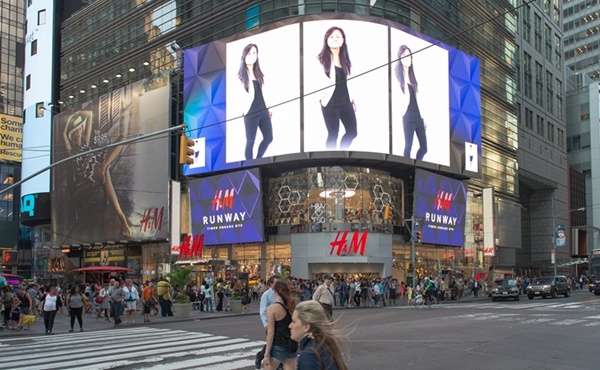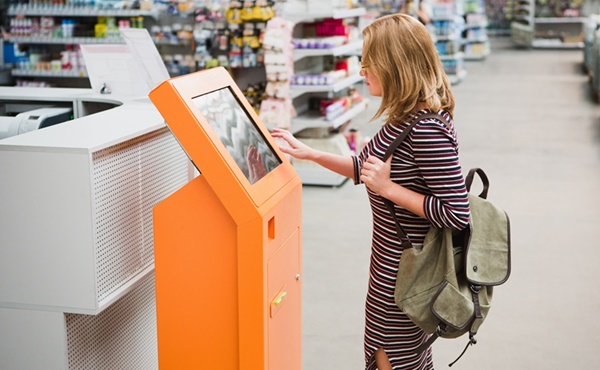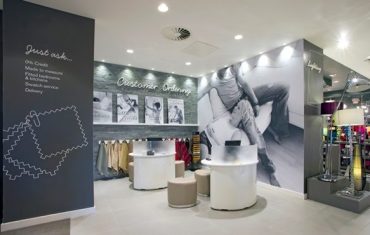It’s an exciting time to be in retail. We’re seeing formerly digital-only retailers begin to build out physical brick-and-mortar storefronts. The space is rapidly evolving and there’s huge opportunity for forward-thinking innovators to shift the dial. As consumers continue to shift their purchasing habits, it’s more important than ever that retailers step up their game with digital-savvy, in-store executions tailored for next gen taste-makers.
Digital signage can transform in-store and storefront experiences. If your customers feel comfortable, relaxed and understood, they are more likely to return and favour your business.
Digital signage is not a one-size-fits-all solution and it should be strategically designed to meet your brand and stores’ specific needs, for example the use of promo boards for high margin items, or a video wall and LED displays to bring the wow factor.
If you’re not keeping up with advancements in technology in this space you’re missing a trick. Here’s what’s happening globally in next-gen digital executions in the ever-changing retail eco-system.
Video walls
Whether your store is freestanding or positioned in a shopping centre, first impressions are key. From the vantage point of window shoppers, video walls at the rear and in front windows are increasingly being used to lure customers into stores with ambient, atmospheric content.
From well-before potential shoppers cross the threshold from outside the store to entering retail floor space, customers can anticipate that they’re about to enter a digitally savvy, relaxing space with a curated shopping experience and an environment that feels familiar.
It’s imperative to consider both purpose and placement. What the customer is doing in real-time within the store and precisely what they’re searching for. For example, large video walls near the back of stores pull shoppers through stores more quickly. And customers trying on the latest winter boots will typically dwell longer, providing the perfect opportunity for more robust retail signage.

While at the register, customers are already lined up to make a purchase. This is where retailers should be thinking from an omni-channel perspective―taking the opportunity to plug special membership rewards programs and/or laying down the framework for the next transaction, whether that be in-store or online.
Digital signage
Once inside a retail establishment, directional digital signage can now deliver incredibly customised, focused messaging, while LED-lit digital shelving units attract the eye with motion. Cameras can identify if a shopper entered from the left or right, the parking lot or food court and have the capacity to discern between families and individuals shopping alone. Messaging is becoming more and more relevant and can be strategically tailored to the shopper, rather than the all-encompassing blanket messaging of the past.
Interactive touch screens
The convenience of online shopping is threatening bricks and mortar retail experience in more ways than one. So it’s more important than ever to give the customer what they want. They are time poor and the rise and rise of online shopping has made them accustomed to intuitive design and having information at their fingertips. So when they’re out-and-about consumers expect the same and, when they don’t get it, frustration ensues.
Interactive screens serve up style guides and allow shoppers to customise products, while ‘Endless Aisle’ order fulfilment facilitates online purchases from in-store. Touchscreens enable shoppers to continue perusing merchandise online to secure additional sizes and colours not currently in-stock. It’s just one more tool tailored for the Gen Z crowd who has grown to expect a highly customised and digitally-enabled experience.
Smart signage
Once a customer’s purpose and intent has been identified, curated signage can be deployed. In addition to directing big game hunters to the right product, intelligence can be garnered from a customer’s entry point into the store. Smart signage is equipped with innovative heat maps and directional signage capable of identifying the path in which customers are approaching.
Furthermore, cameras help to provide analytics for retailers―things like where products are being removed from the shelves―enabling retailers to better position a product and quickly fill empty slots when a displays empty.

Similarly, we’re seeing a move toward smart content, utilising RSS data feeds. If there’s a thunderstorm forecast screens will advertise gum boots. Heatwave ready to hit? Cue pictures of summer sandals. Brands can use a hands-off approach that’s still highly tailored by tying in postal codes and RSS feeds to advertising content.
Data from the US shows 70 per cent of shoppers already have their eyes fixed on in-store screens while waiting in line. That’s a lot of eyeballs. There’s a reason why 40 per cent of brands in the US are using cutting-edge digital solutions to increase shopper loyalty and customer retention.
And we are seeing our savvy Australian clients like Myer, Smiggle and the Body Shop use innovative digital signage to increase shopper traffic and time in-store―and ultimately grow sales.
There are multitudes of nuanced ways in which retailers can elevate their customer experience via digital signage, putting tech-savvy shoppers in the mood to buy and, more importantly, return time and time again.
By Mark Larner, head of innovation at Mood Media Australia







